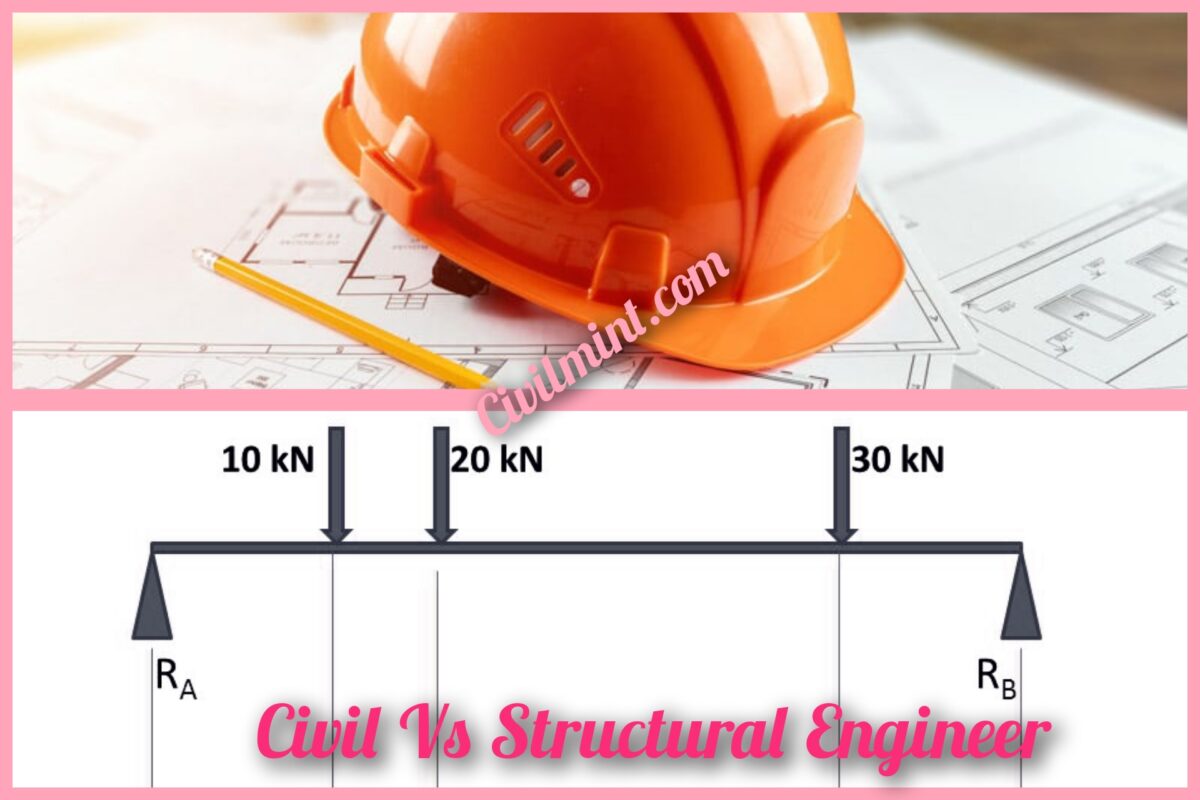The main difference between civil engineer and structural engineer is that while civil engineering is a broad field, structural engineering is a specialized branch of civil engineering.

Table of Contents
Civil Engineering Vs Structural Engineering
Civil engineering and structural engineering are two distinct but closely related fields. Both fields are concerned with the design, construction, and maintenance of buildings, bridges, highways, and other types of infrastructure. However, there are some key differences between civil and structural engineering.
Civil Engineering
Civil engineering is a broad field that encompasses many different types of projects. Civil engineers are responsible for designing and constructing infrastructure that is necessary for society to function. This can include roads, bridges, tunnels, water and wastewater systems, and buildings. Civil engineers work on both the design and construction phases of a project, from the initial planning stages through to completion.
Civil engineering requires a wide range of skills, including an understanding of mathematics and physics, as well as knowledge of materials science and engineering principles. Civil engineers must be able to use computer-aided design (CAD) software to create detailed plans and models, as well as analyze and test materials and structures.
Structural Engineering
Structural engineering is a specialized branch of civil engineering that focuses specifically on the design and analysis of structures. Structural engineers are responsible for ensuring that buildings and other structures are safe and stable. They work closely with architects, builders, and other construction professionals to design and build structures that meet safety and performance standards.
Structural engineers use advanced mathematics and physics to analyze and design complex structures. They must be able to calculate stresses and loads on a structure, and design it to withstand these forces. They also use computer-aided design (CAD) software to create detailed plans and models of structures, as well as analyze and test materials and components.
The popular software for structural engineering are Staad Pro, Etab, Sap2000 etc.
Staad pro is used for design of steel structures while Etab and Sap2000 is used for design of concrete structure. Sap2000 also used to design complex structures.
Key Differences Between Civil and Structural Engineering
While there is some overlap between civil and structural engineering, there are some key differences between these two fields. Here are some of the main differences:
1. Scope of Work
Civil engineering is a broad field that encompasses many different types of infrastructure projects. Civil engineers may work on projects related to transportation, water and wastewater systems, and buildings, among other things.
Structural engineering, on the other hand, is a specialized branch of civil engineering that focuses specifically on the design and analysis of structures. Structural engineers work on projects related to buildings, bridges, and other types of structures.
2. Focus on Safety
While both civil and structural engineers are concerned with safety, structural engineers have a particular focus on ensuring that structures are safe and stable. They use advanced mathematics and physics to calculate stresses and loads on a structure, and design it to withstand these forces.
Civil engineers also prioritize safety, but their focus is broader. They are responsible for designing and constructing infrastructure that is safe and reliable, including roads, water and wastewater systems, and buildings.
3. Technical Skills
Both civil and structural engineers require technical skills, including an understanding of mathematics and physics, as well as knowledge of materials science and engineering principles. However, structural engineers require more specialized skills related to the design and analysis of structures.
Structural engineers must be able to calculate stresses and loads on a structure, and design it to withstand these forces. They also use computer-aided design (CAD) software to create detailed plans and models of structures, as well as analyze and test materials and components.
4. Professional Licenses
Both civil and structural engineers require professional licenses to practice in most jurisdictions. However, the specific requirements for licensure may vary depending on the jurisdiction and the type of work being done.
In general, structural engineers require more specialized training and education than civil engineers, which may be reflected in the licensing requirements.
Summing Up
Civil engineer and structural engineer are both critical fields that are necessary for the design and construction of infrastructure.
While they have some similarities, they also have some key differences, and each requires a specific set of skills and knowledge.
My Advice
If you are considering a career in engineering, it is important to carefully consider your interests and strengths, and choose the field that is the best fit for you.
Faqs
Civil engineers work on a variety of projects, including roads, bridges, water systems, and airports. Structural engineers focus primarily on the design of buildings and other structures.
Both civil engineers and structural engineers typically have a bachelor’s degree in engineering or a related field. Licensure and continuing education may also be required.
